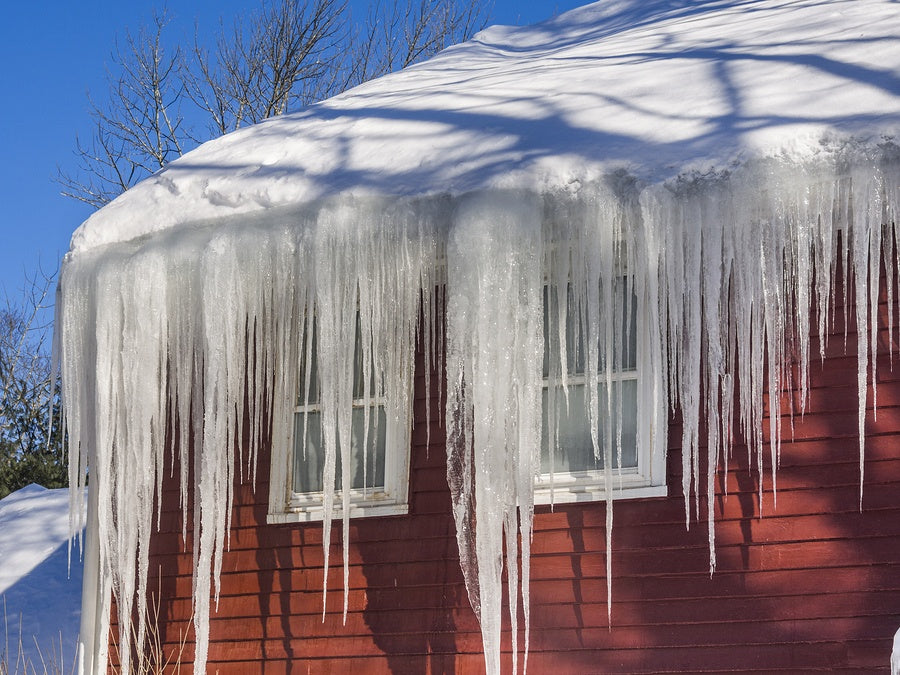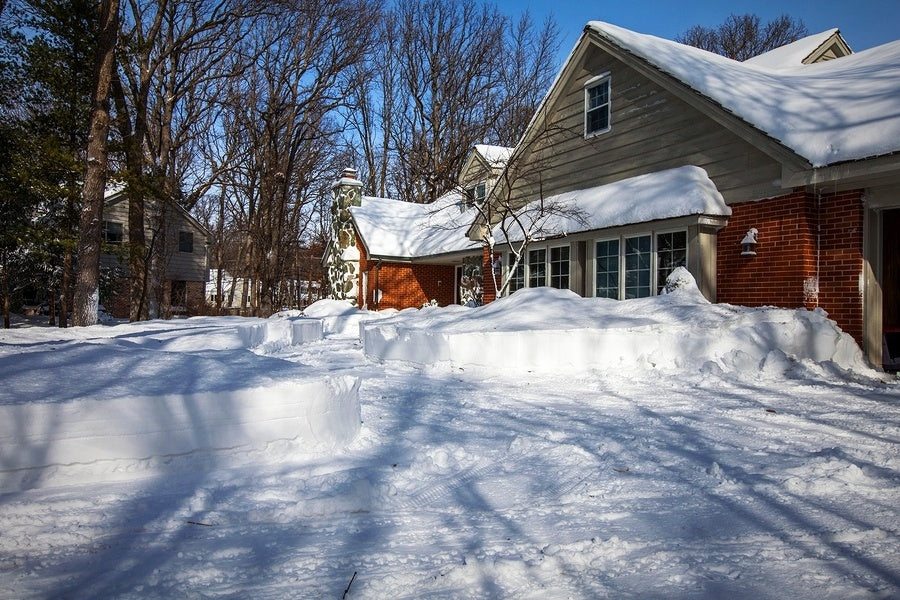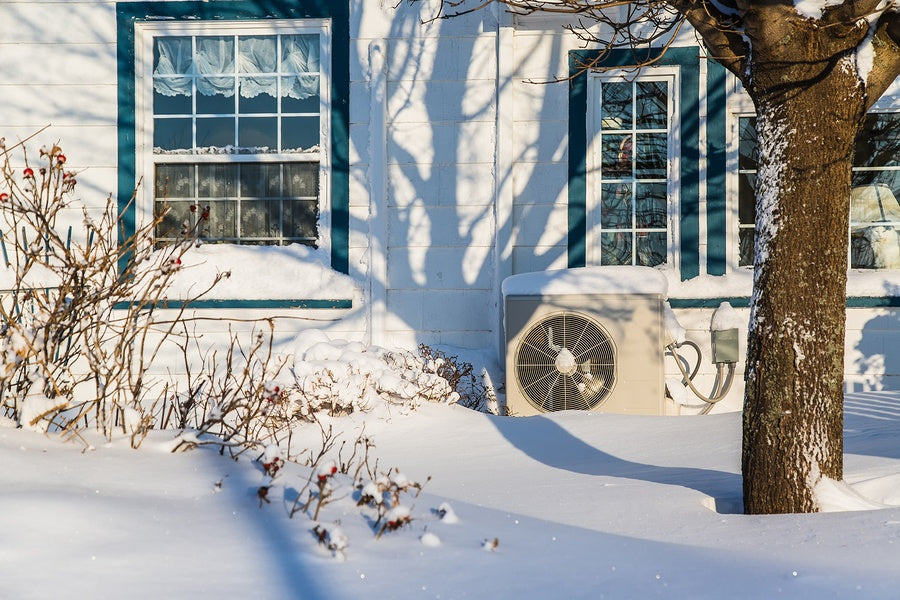
Homeowners do well to think about ice dams and learn how to prevent them long before the arrival of winter. The damage ice dams can do by causing leaks, weakening shingles, and rotting out portions of the roof decking are serious enough to merit taking early action on preventative measures.
Why Do Ice Dams Form?
Ice dams form because of a disparity in the temperature of areas of your roof over the heated home interior and the eaves that extend past interior living spaces. About a third of all heat escaping from the average home exits through the roof, passing first of all through the attic. This heat causes snow to melt across most of the roof surface, flow down to the eaves, and there to refreeze and back up future run-off water behind it.
As long as the edges of your roof are below 32º F (0° C) and other parts of your roof are above that temperature, ice damming is going to occur. The greater the temperature difference and the longer the ice deposits have to grow, the bigger will be your ice dam problem.
How Can I Keep My Roof Cool?
By keeping your roof as cool as possible during the winter, you reduce the risk of ice dams forming. But how can you control your roof temperature? First, you need to insulate and ventilate your attic.
Before applying additional insulation, however, any air leaks in the roof or in the attic floor need to be sealed. Gaps around the chimney can be covered with steel L flashing, which should be installed using fire-stop caulk. Gaps around wires, vents, and pipes should also be caulked, and any gap that cannot be filled with a sealant needs to be permanently covered over.
After all air leaks are eliminated, install polystyrene air channels between the rafters before covering them with batts insulation. This air gap helps prevent condensation from accumulating on the insulation, which would decrease its effectiveness. On the attic floor, you can install loose, blown-in insulation to ensure a more compact barrier, and while the attic walls are not as crucial, they need to be insulated as well.
If your attic has an open entry hatch, heat from living spaces below is pouring into the attic through the opening. You can cover it with a "door" made of polystyrene with foil-foam edge caps held on with aluminum tape.
If heat tends to stand still once in the attic, consider installing two motor-driven fan vents. One will draw in cold air, and the other, on the opposite side of the attic, will exhaust hot air.
If you have recessed lighting that cannot be safely covered by insulation, it is best to replace it with sealed IC ("can") lights, which can be insulated without creating a fire hazard.
What If I Have a Furnace in My Attic?
Attics with furnaces and HVAC ducts in them present a special challenge when it comes to keeping your roof cool. It may not be realistic to prevent ice dams 100% in this case, but you can keep them to a minimum by following the steps already mentioned just above.
You can also install un-faced batts/blanket insulation over the furnace's heat ducts. The joints of your heat ducts should be insulated with mastic insulation with fiber reinforcement, such as R5 or R6 foiled fiberglass.
Finally, ensure that all vents exiting your home do so through the walls/roof but never through the soffit. When hot air warms the soffit, it warms the eaves just above the soffit as well and leads to ice dams.
What If I Already Have an Ice Dam?
Ice dams can be removed professionally with a high-powered steam machine in extreme cases. Otherwise, you can apply rock salt (sodium chloride) or another de-icer like calcium chloride, which can melt ice effectively in temperatures as low as -25º F (-31.67° C). You be very careful about trying to use an ice pick or other tool to chip off the ice, however, since you could easily shatter/puncture the shingles, which are very brittle in cold weather.
Ice dams are much more than a minor inconvenience or an eye-sore on your home. They represent a "clear and present danger" of roof leakage that could do serious (and expensive) damage to your home's interior, besides damaging the roofing and roof decking.
Preventing ice dams requires insulating and ventilating your attic so as to keep it, and the roof above it, at a temperature not significantly higher than that of your roof's eaves. While ice dam prevention will require at least a small financial investment, it will save you far more than it costs you.


